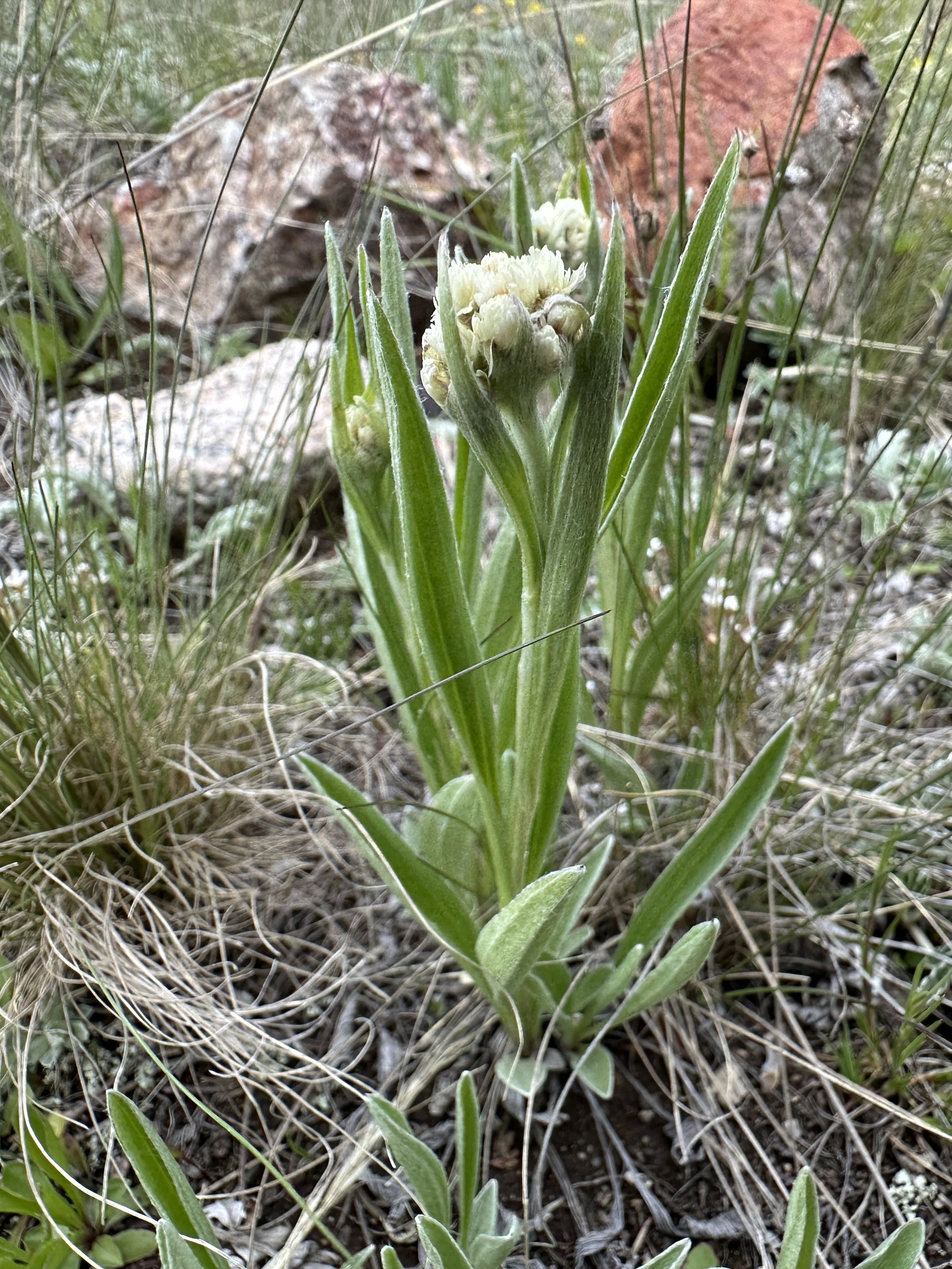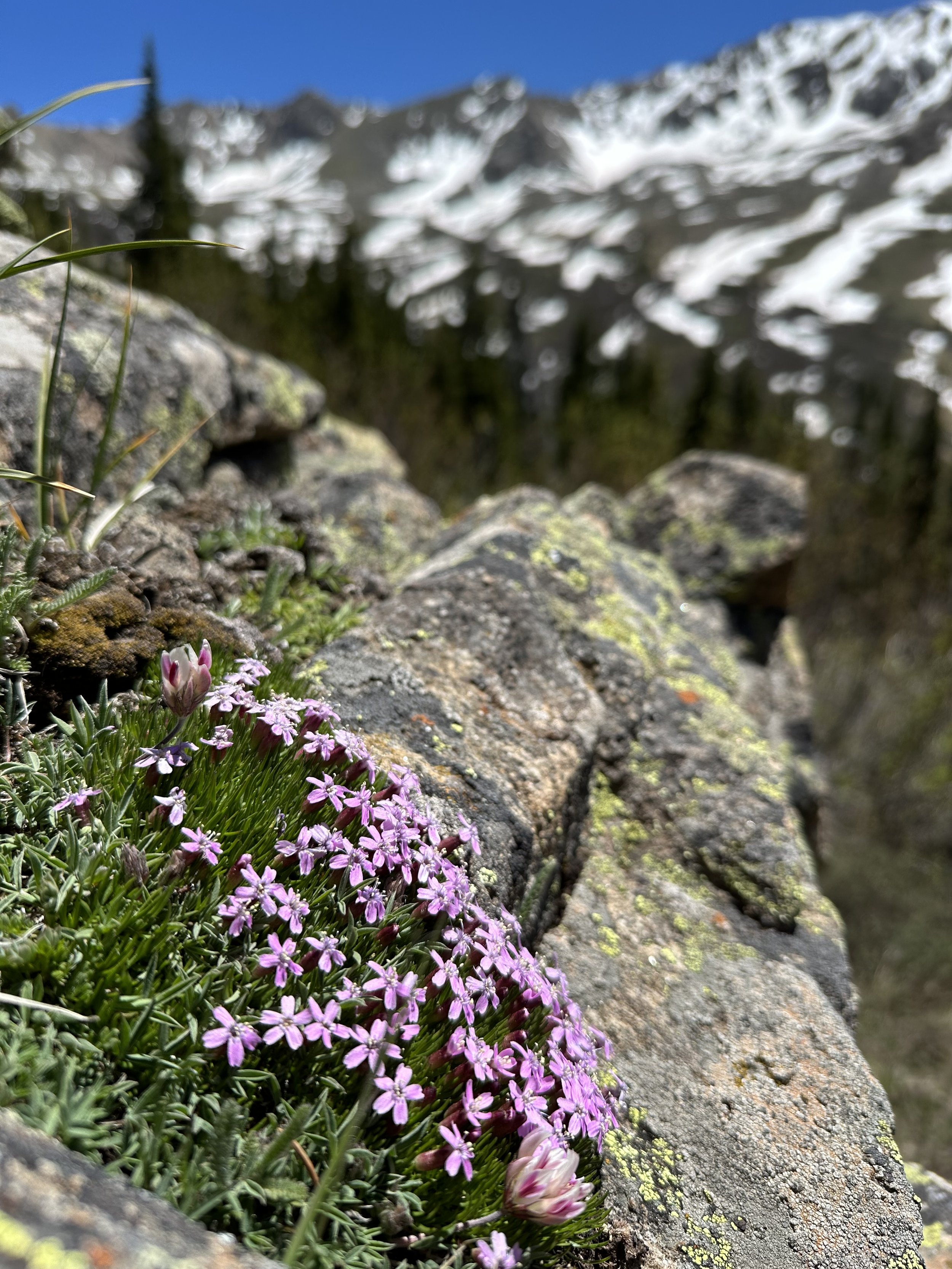Common & scientific name
Field chickweed, Cerastium arvense ssp. strictum
Family
Pink, Caryophyllaceae
Location
North Fork Lake Creek TH, 10,800’
Fun, weird, helpful, or little known fact
The foremost authority on Colorado flora, William Weber (at least prior to Jennifer Ackerfield’s arrival: the jury is still out), believes this flower is classified erroneously not only species-wise, but family-wise: “This family [which he identifies as Alsinaceae] is usually placed as a subfamily of Caryophyllaceae, but it differs obviously in having its flowers constructed differently, with separate instead of united sepals, and petals without narrow basal claws.”
Obviously.
Furthermore: “C. arvense is a northern European tetraploid [having four sets of similarly structured chromosomes] occurring in America at low altitudes only as a weed. Our plants are diploid [two sets] and are related to, if not identical to, the diploid C. strictum of the high mountains of Eurasia.”
This plant is also called Mouse-ear chickweed. As in Mickey.
All joking aside, I am forever indebted to Dr. Weber for his meticulous work and complete devotion to Colorado’s flora, without which all Colorado wildflower lovers would be wildly impoverished.







































